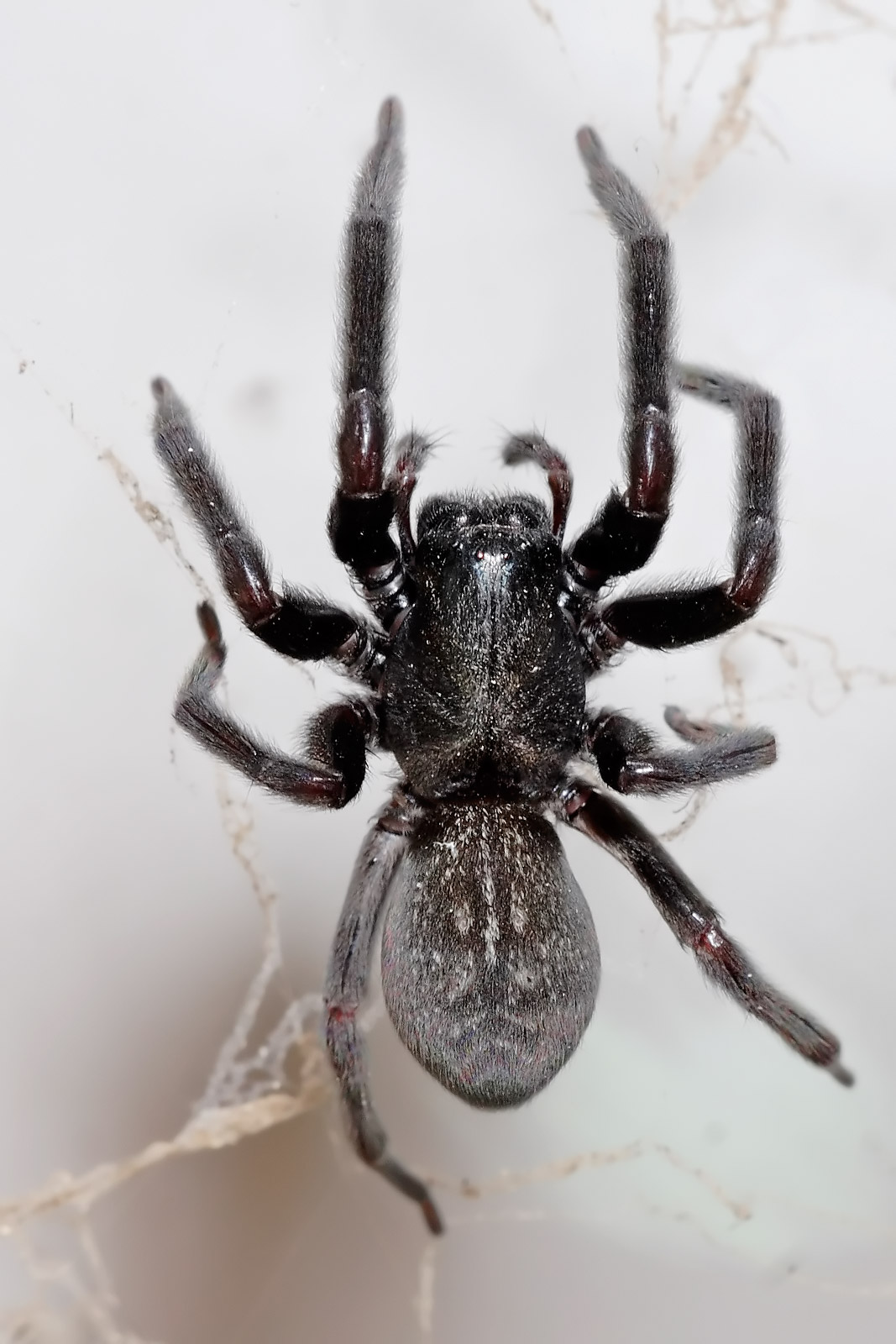All About Black House Spiders
Black House Spiders (Badumna insignis), also known as Window Spiders, are common arachnids found in urban areas. Their presence around homes and buildings can be concerning due to their funnel-like webs and occasional bites. Understanding their behavior and effective control methods is crucial for maintaining a pest-free environment.
What are Black House Spiders?
Black House Spiders, scientifically known as Badumna insignis, are dark-colored spiders frequently found in and around buildings. Commonly referred to as Window Spiders, they are part of the Desidae family and are known for their funnel-shaped webs.
These spiders are arboreal and primarily feed on insects attracted to light. They are distinguishable by their dark brown to black carapace and legs, with a charcoal gray abdomen featuring white markings.
How to Identify Black House Spiders
Appearance:
- Female Black House Spiders: 12 mm to 18 mm in size
- Male Black House Spiders: 9 mm to 15 mm in size
- Carapace Color: Dark brown to black
- Leg Color: Dark brown to black
- Abdomen Color: Charcoal gray with possible white markings
Similar Pests: Black House Spiders can be confused with the Brown House Spider (Badumna longinqua). Unlike the Black House Spider, Brown House Spiders have a brownish carapace and banded legs.
Activity and Seasonality
Active Seasons: Black House Spiders are active year-round but are more commonly noticed during warmer months when they are more active and visible around light sources.
Lifecycle: Their lifecycle includes egg sacs produced by females, with eggs hatching into spiderlings that mature over about two years.
Where to Find Black House Spiders in or Around Your House
Common Habitats: Black House Spiders are typically found around window frames, wall crevices, tree trunks, logs, and rock walls. Indoors, they are often seen in corners, around windows, and doorways.
Specific Hiding Spots: They prefer sheltered spots such as under eaves, in building crevices, and around outdoor lighting that attracts their prey.
How to Get Rid of Black House Spiders
Immediate Action: If you spot a Black House Spider, carefully remove the spider and its web using a vacuum or broom. Dispose of the web and spider properly.
Professional Treatments: Pest control services can provide thorough inspections and treatments to eliminate spiders and prevent future infestations.
DIY Methods: To manage spiders yourself, seal cracks and crevices around your home, reduce outdoor lighting near entry points, and regularly remove webs.
How to Prevent Black House Spiders
Preventive Measures:
- Seal cracks and crevices around windows, doors, and foundation.
- Reduce outdoor lighting near entry points to minimize attraction of insects.
- Regularly clean and remove spider webs from around the home.
Home Maintenance:
- Maintain a clean and clutter-free environment to reduce hiding spots.
- Trim vegetation near the home to eliminate potential spider habitats.
- Inspect and repair screens on windows and doors to prevent spider entry.
Long-term Strategies:
- Install door sweeps and weather stripping to close gaps.
- Consider using spider repellents or deterrents around entry points.
- Regularly inspect and clean areas like attics and basements where spiders might build webs.
Professional Assistance:
- If you have persistent issues with Black House Spiders, contact a pest control professional for a comprehensive inspection and treatment plan.
Conclusion
Black House Spiders are common but manageable pests. By understanding their behavior and implementing effective control measures, you can keep your home spider-free.
If you’re dealing with a Black House Spider infestation, contact Pest Control Consultants today for a free consultation and effective treatment plan.
